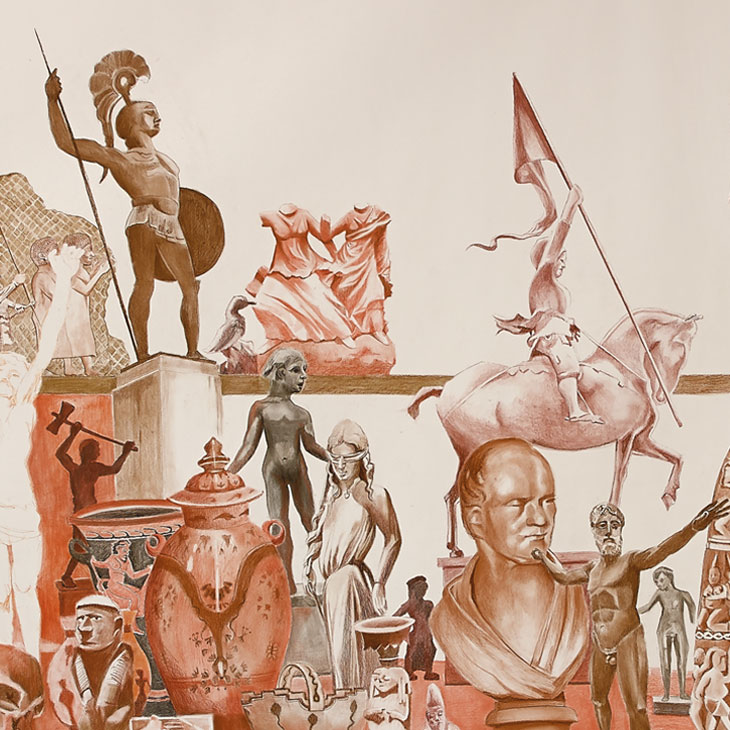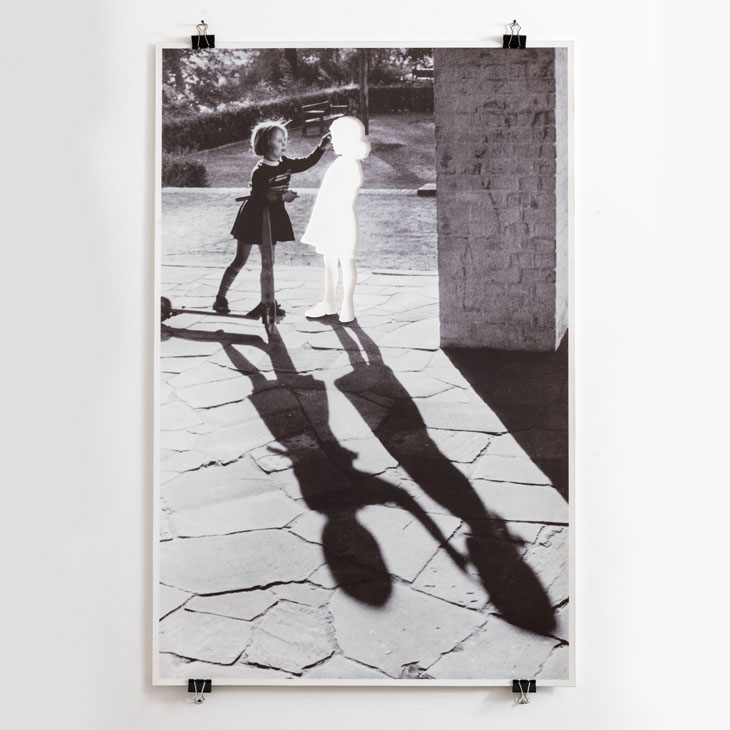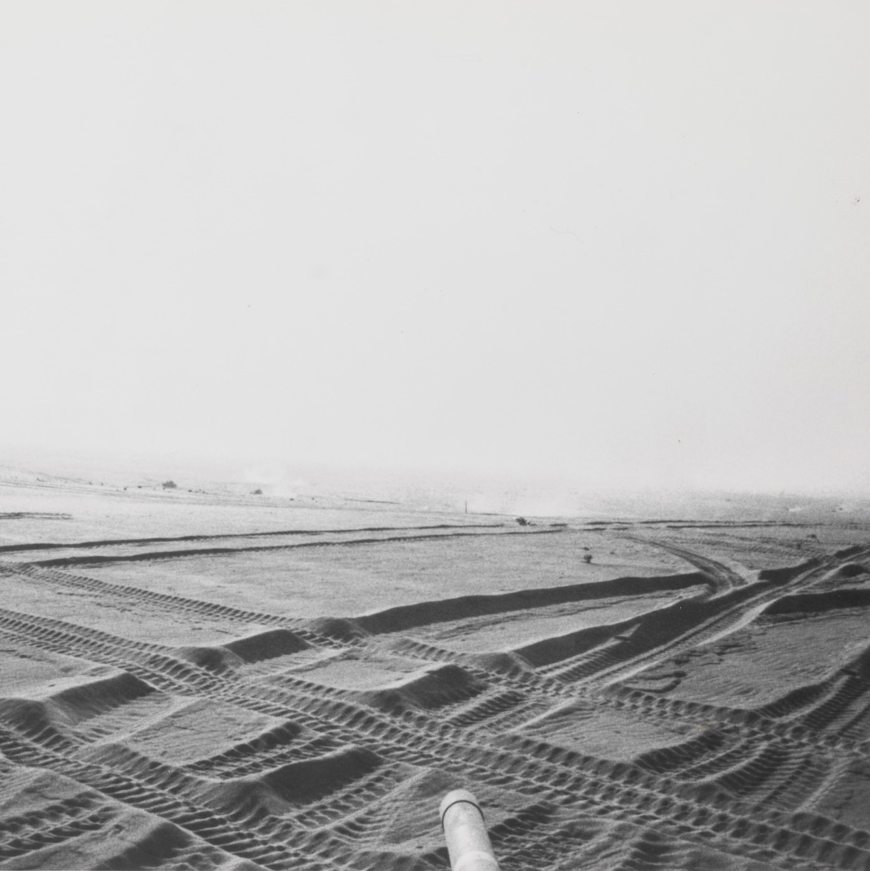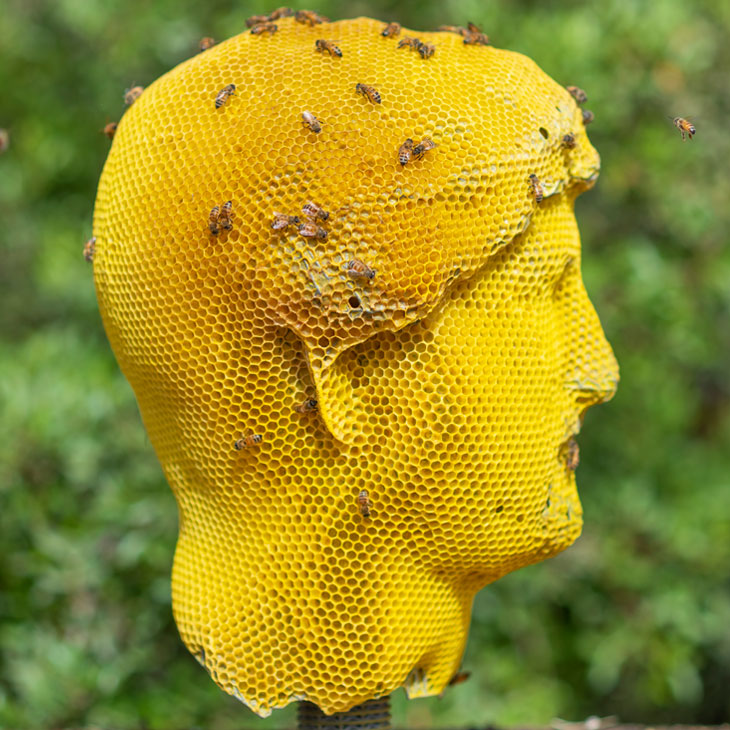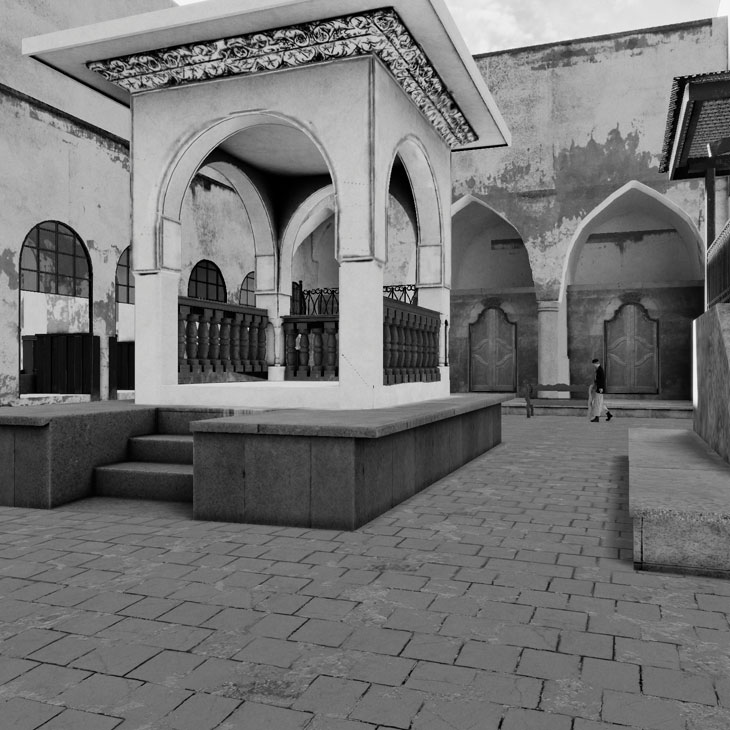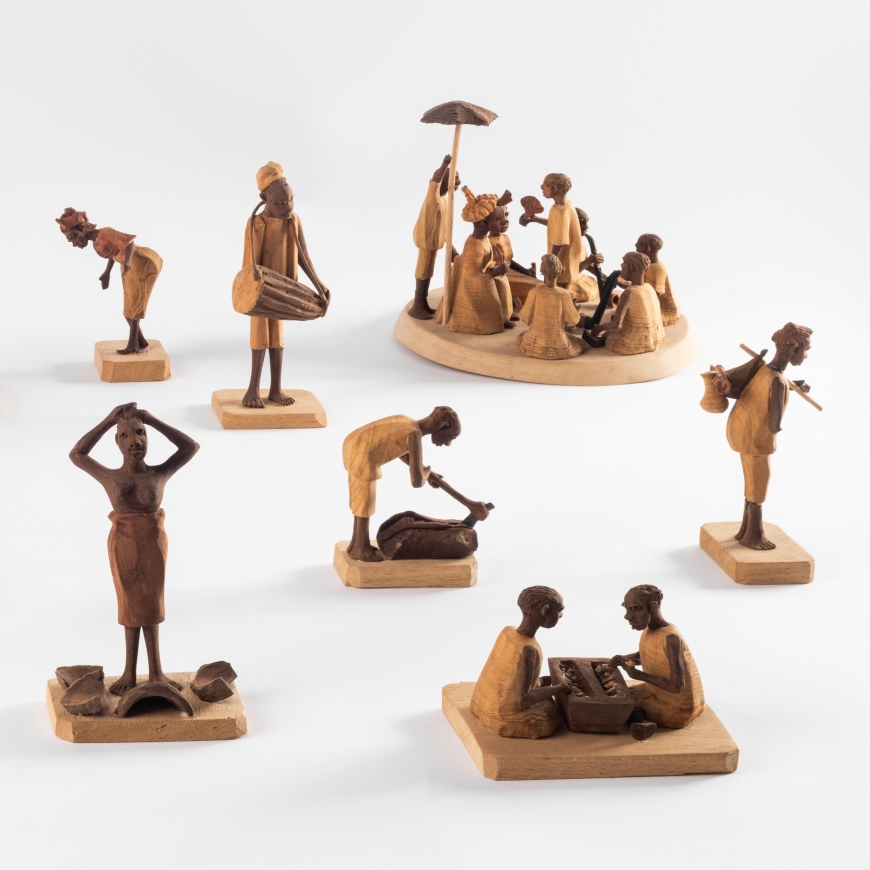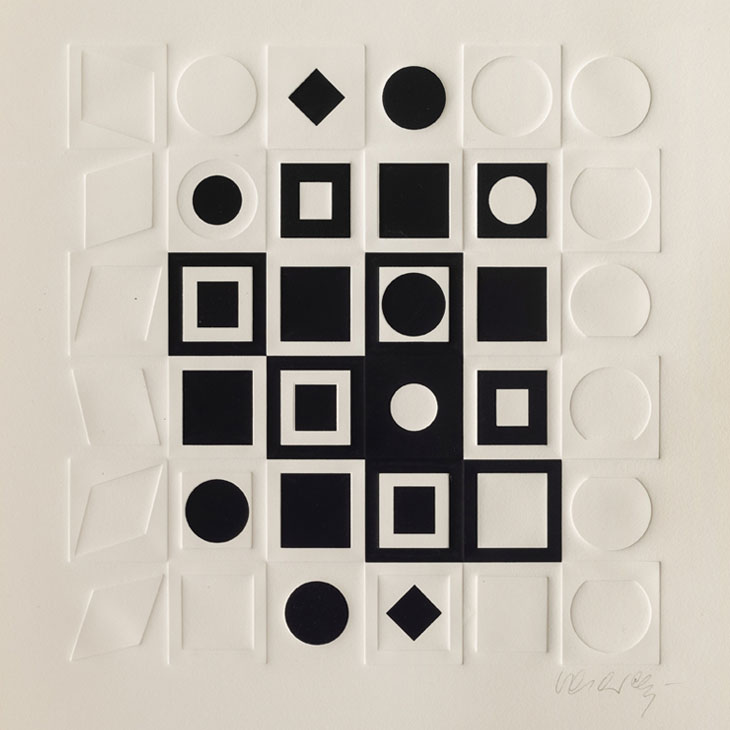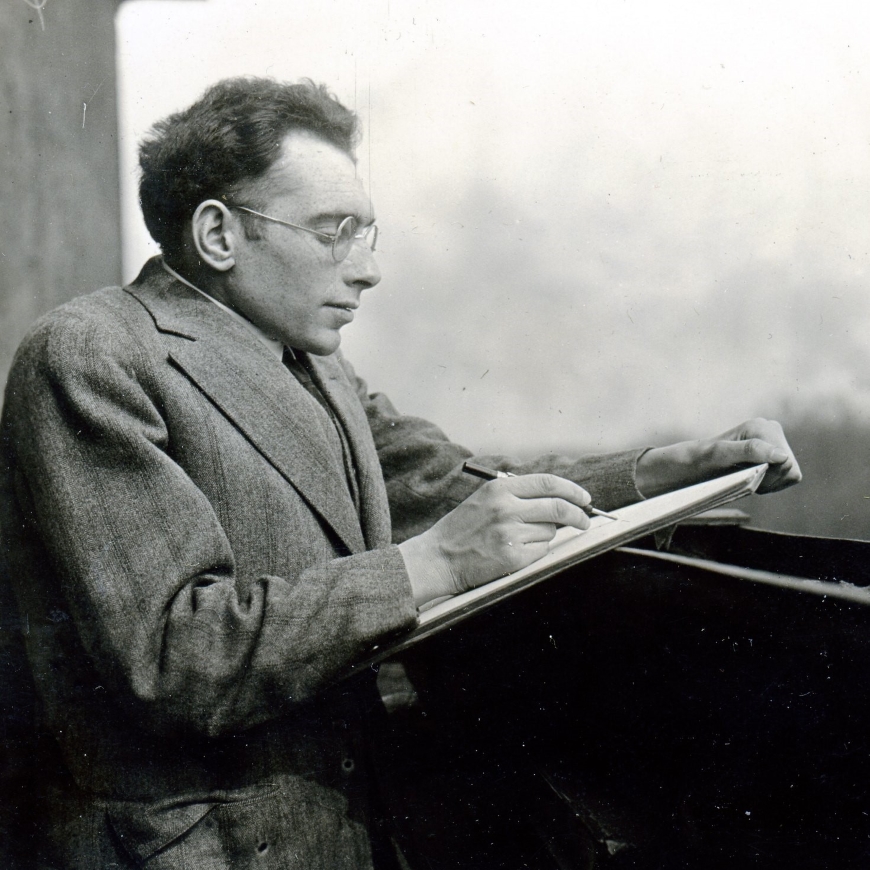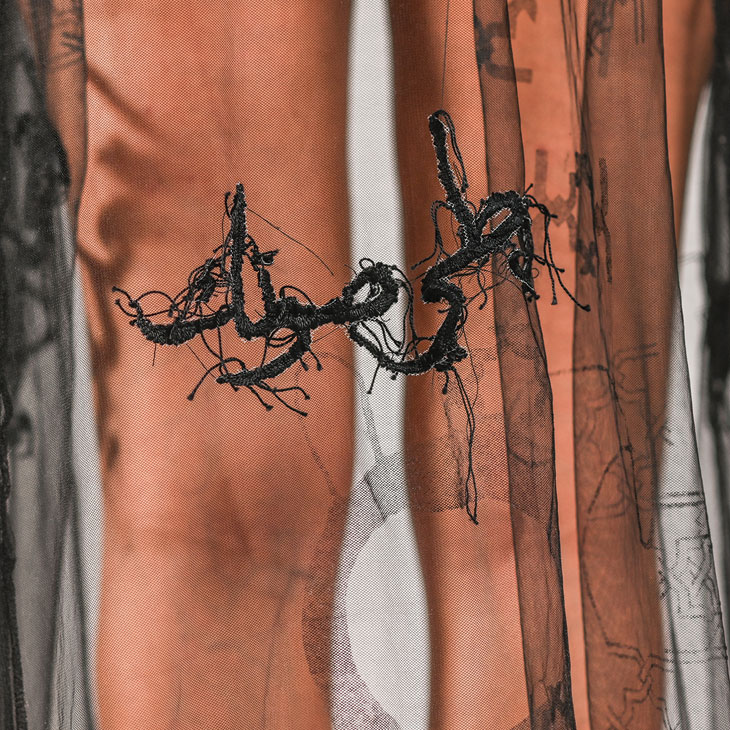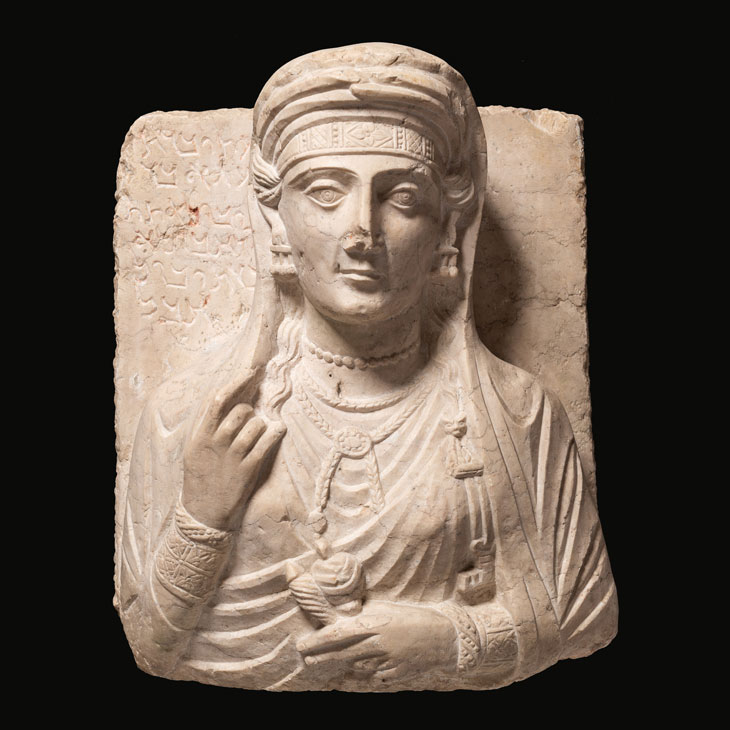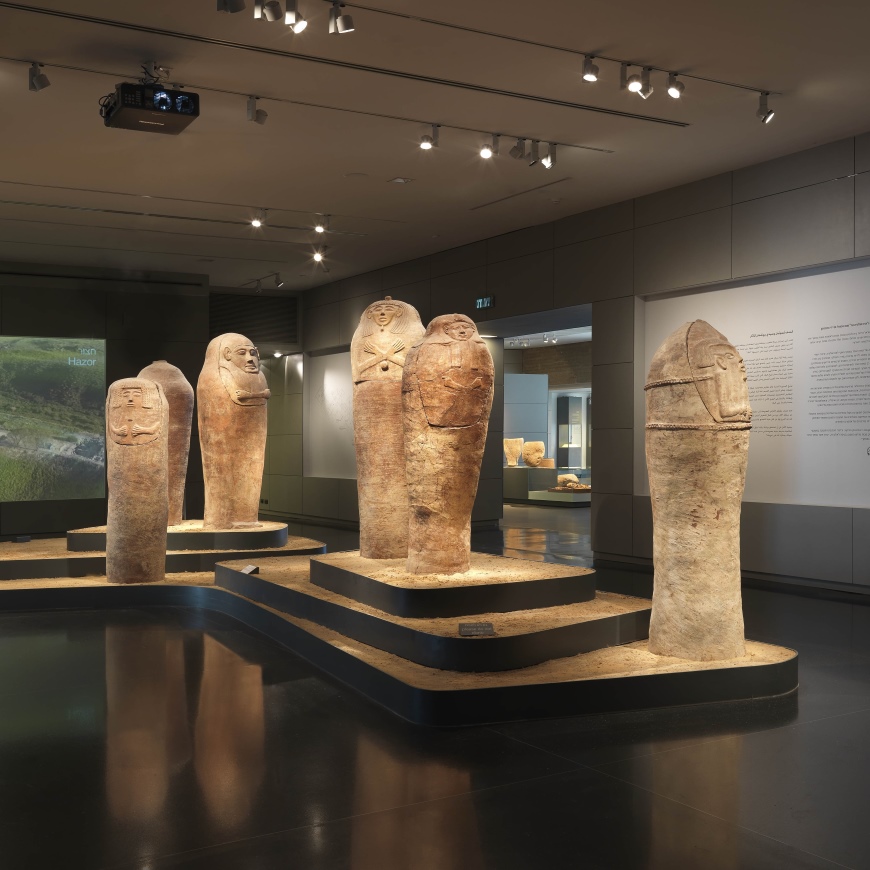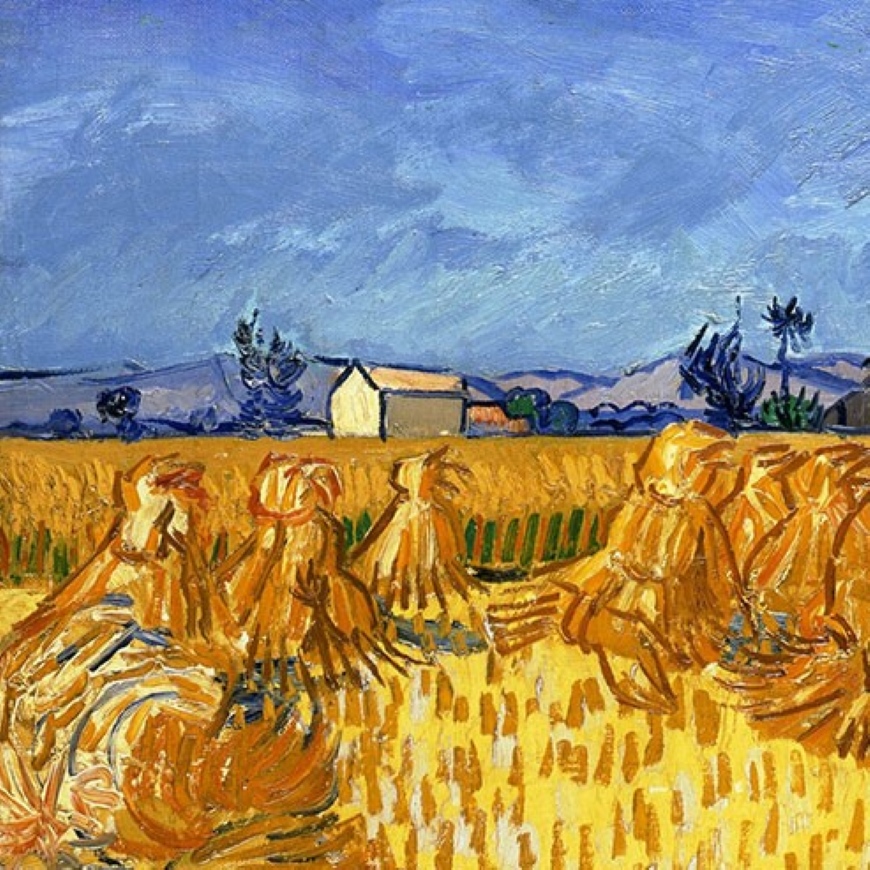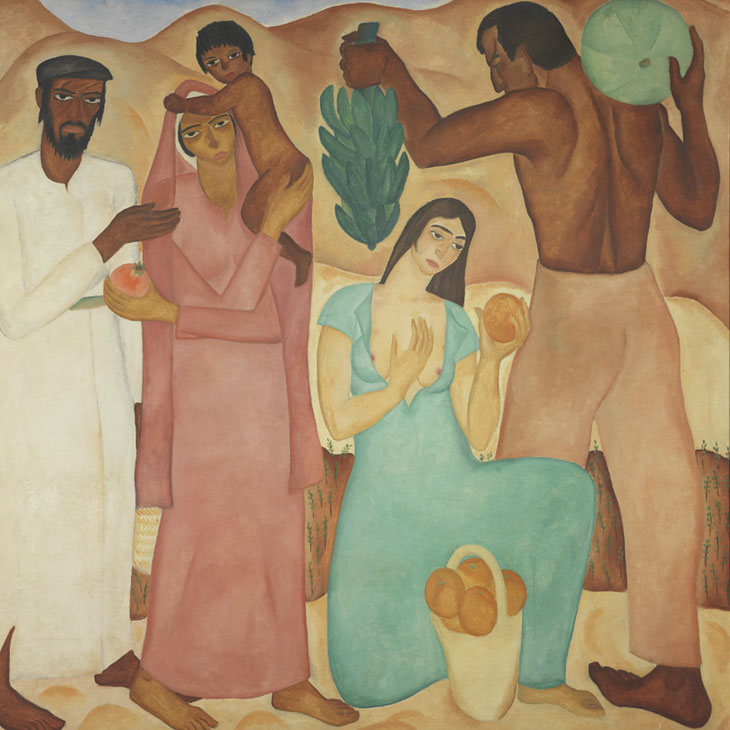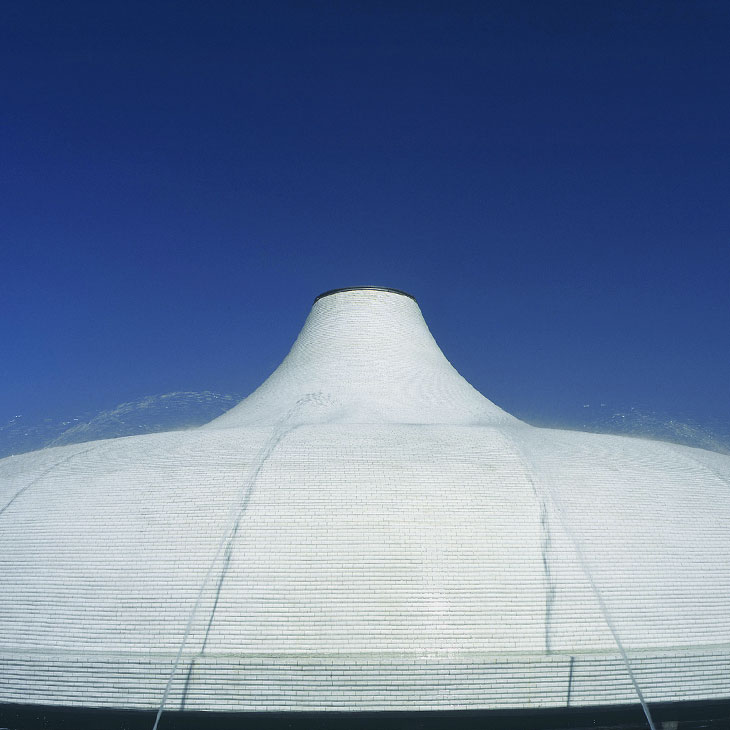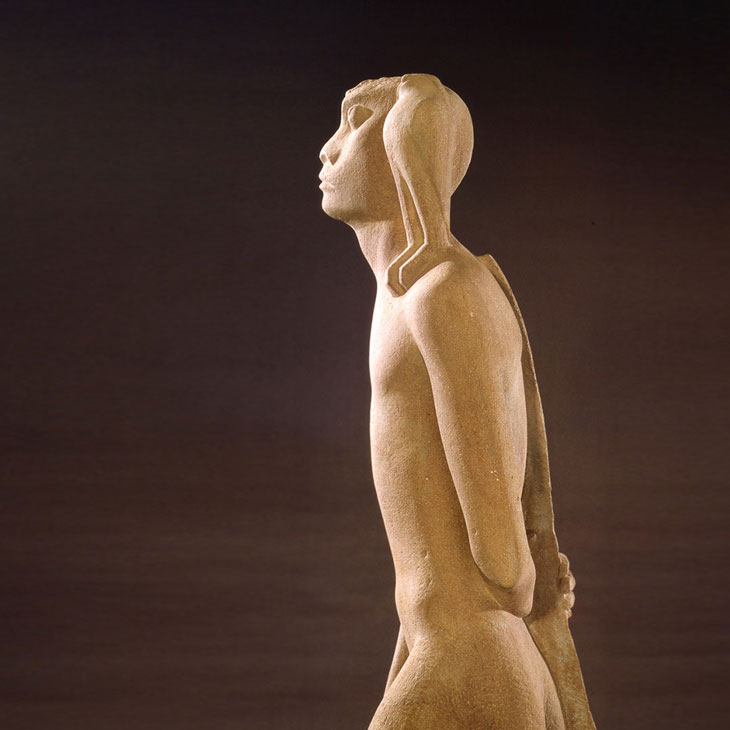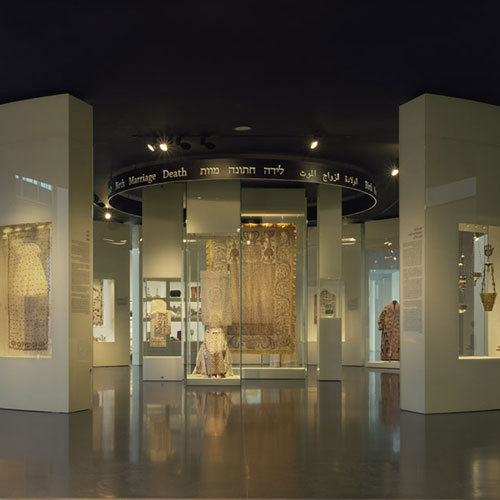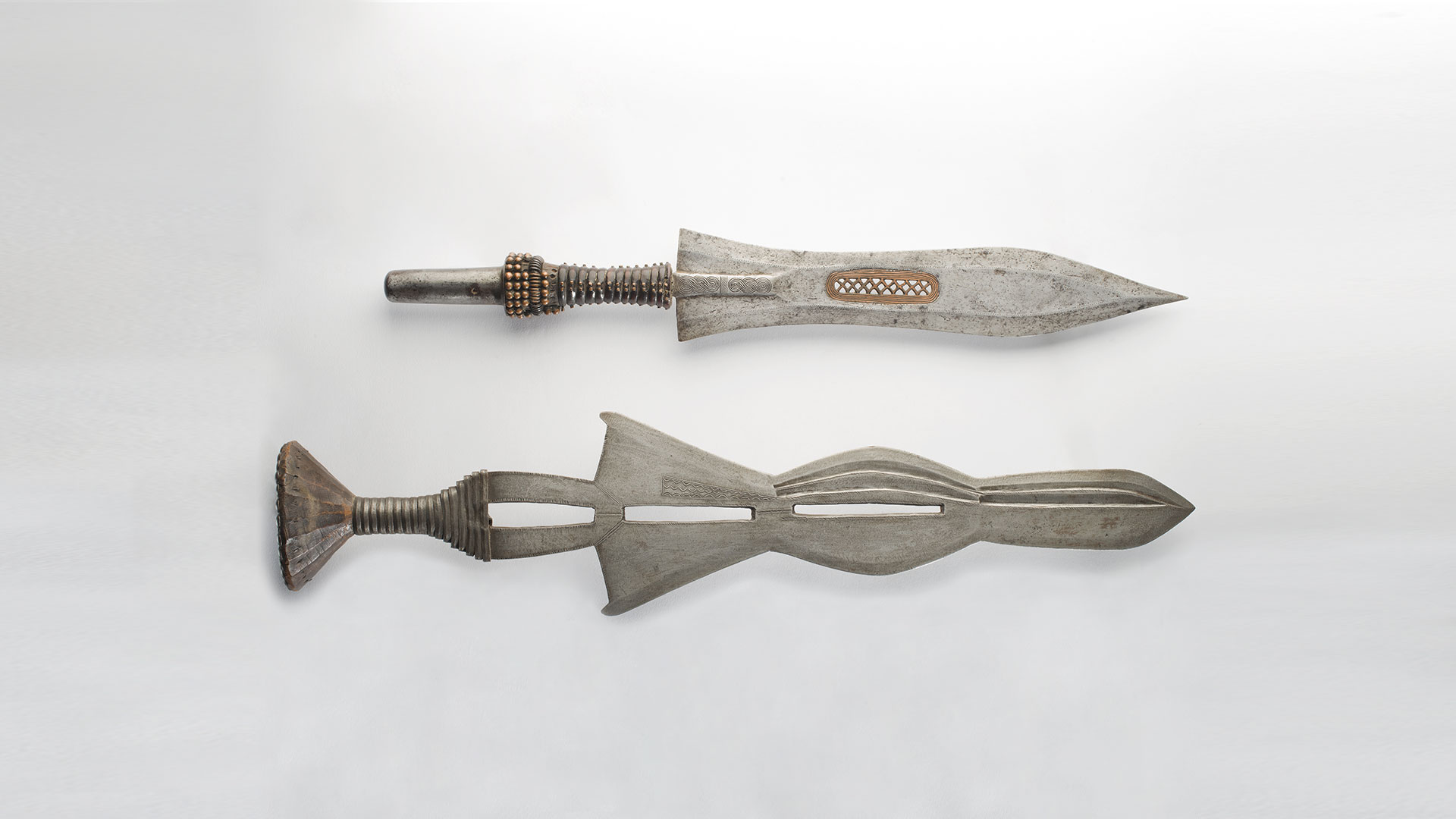
African Ceremonial Weaponry
Status, Authority, and Prestige
Special exhibit
-
April 19 2016 - April 19 2018
Curator: Dorit Shafir
-
When and how knowledge of making iron originated in Africa is still under debate. However, it is clear, from material evidence, that by 500 BCE blacksmiths across the continent were smelting indigenous iron ore and copper in earthen furnaces. The iron, hammered and shaped into various tools, jewelry, and musical instruments, was mainly and most importantly made into metal blades of ambitious and remarkable design. In Europe, iron and copper were considered ordinary metals, but in Africa iron was sacred, and copper was prized more highly than gold and reserved for royalty. Every aspect of the African metalworking process – particularly relating to iron – was associated with origin myths (fertility and birth). Smelting was perceived as an act of procreation whereby earth, fire, and water united to conceive an offspring – iron. Blacksmiths, who were involved in the creation of life-threatening weapons such as knives, swords, axes, and daggers, were believed to have the power to negotiate life and death, mediating between the physical and the spiritual realms. The production of iron and copper was always an issue of ritual concern in Africa, particularly when associated with weapons. These were meant to be carried, danced with, or tossed in the air on ceremonial occasions, conferring judicial or religious authority upon their owners. In addition, African blades were considered currency and were among the most valuable of personal possessions. Featuring several rare and unusual specimens, this display of African ceremonial weaponry comprises some of the most imaginative blade types, prized for their intricate incising, applied ornamentation, and combination of materials. The objects are gifts from the collection of Donna L. and Robert H. Jackson, Cleveland, Ohio, to American Friends of the Israel Museum, unless indicated otherwise, and date from the late 19th to the early 20th century. Prestige scepter Momvu people, Democratic Republic of the Congo, late 19th – early 20th century Iron, wood, brass Prestige scepter Ekonda people, Democratic Republic of the Congo, 19th century Iron, wood, copperPrestige dagger Songye people, Democratic Republic of the Congo, ca. 1885–87 Iron, leather, wood, copper Ceremonial sword Ngombe / Doko people, Democratic Republic of the Congo, late 19th – early 20th century Iron, wood Ceremonial hat (botolo) Ekonda, Democratic Republic of the Congo, late 19th – early 20th century Vegetal fiber and brass Gift from the collection of Donna L. and Robert H. Jackson, Cleveland, to American Friends of the Israel Museum
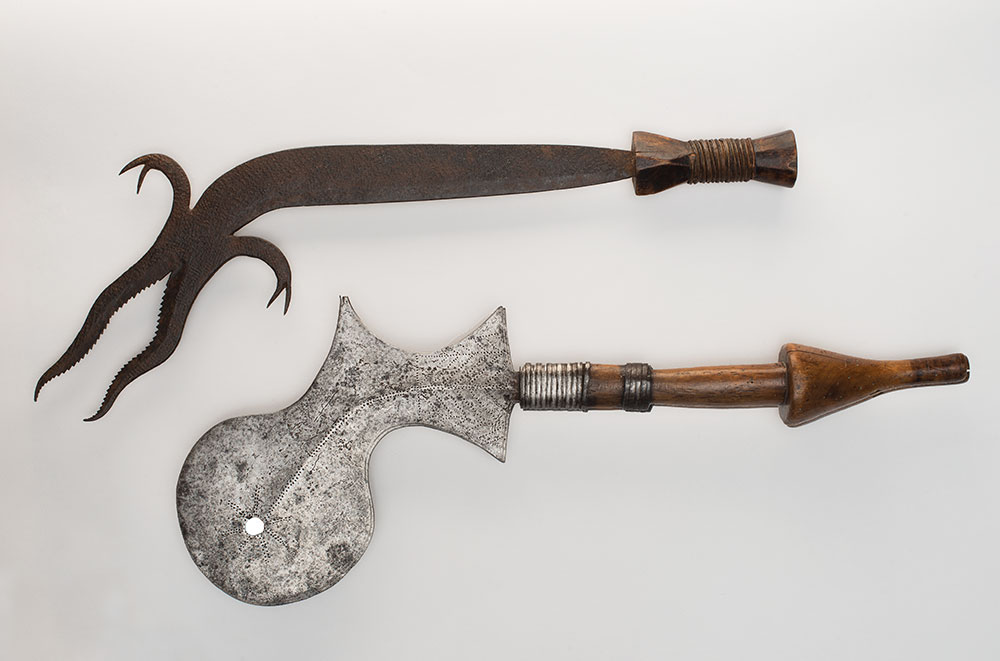
- Apr 18May 02May 06May 09May 16May 20May 23May 27May 30
- Apr 18May 02May 09May 16May 23May 30
- Apr 18May 02May 09May 16May 23May 30
- Apr 18May 02May 09May 16May 23May 30
- Apr 16Apr 18Apr 30May 02May 09May 16May 23May 30
- May 02May 06May 09May 16May 20May 23May 27May 30
- Apr 19Apr 20Apr 27May 03May 04May 07May 10May 11May 17May 18May 21May 24May 25May 28May 31
- May 06May 20May 27
- May 07Jun 25
- May 07Jun 18


